Contents
- World Dugong Day 2020
- What a GDP contraction in FY 2020-21 entails for India?
- Centre set to redefine ‘migrant workers’
- Unrecorded Migrants of India
- Google faces antitrust case in India
- Trump offers to mediate, China’s Ambassador on Cooperation
WORLD DUGONG DAY 2020
Focus: GS-III Environment and Ecology
Why in news?
The “World Dugong Day” is celebrated on 28th May.
Dugong
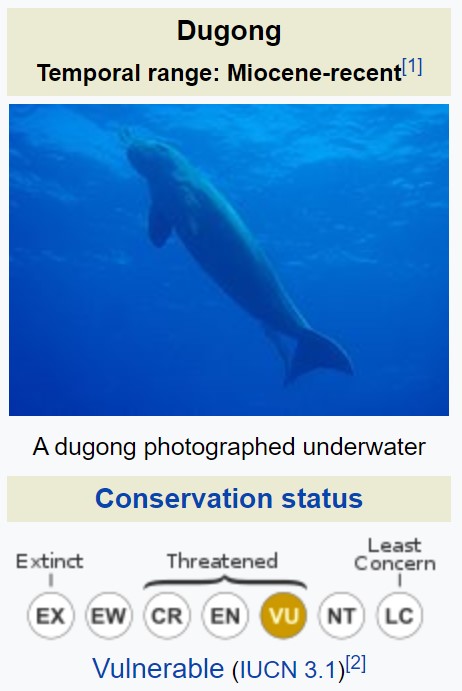
- The Dugong is a medium-sized marine mammal, which is the only living representative of the once-diverse family Dugongidae.
- The IUCN Red List lists the dugong as a species Vulnerable to Extinction.
- Convention on International Trade in Endangered Species (CITES) limits or bans the trade of derived products.
- Dugongs are protected in India under Schedule I of the Wild (Life) Protection Act, 1972.
- The dugong, commonly known as the sea cowis the only strictly herbivorous marine mammal.
- Dugongs graze on seagrass, especially young shoots and roots in shallow coastal waters.
- Dugongs are mammals, which means they give birth to live young and then produce milk and nurse them.
- Dugongs are found in warm coastal waters from the western Pacific Ocean to the eastern coast of Africa.
- Hundreds of dugongs inhabited waters off the Odisha, West Bengal and Andhra Pradesh coasts two centuries back. But they are extinct in these areas now.
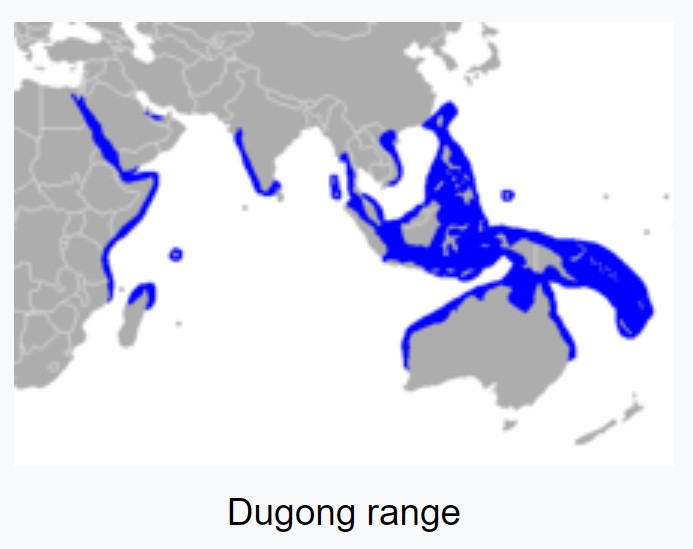
Threats to dugongs
- Human activities such as the destruction and modification of habitat, pollution, rampant illegal fishing activities, vessel strikes, unsustainable hunting or poaching and unplanned tourism are the main threats to dugongs.
- The loss of seagrass beds due to ocean floor trawling was the most important factor behind dwindling dugong populations in many parts of the world, Sivakumar said.
- The fact that they live in shallow waters puts them under great pressure from human activity.
-Source: Down to Earth Magazine
WHAT A GDP CONTRACTION IN FY 2020-21 ENTAILS FOR INDIA?
Focus: GS-III Indian Economy, Don’t delve too much into the exact numbers
Why in news?
- On May 22, Reserve Bank of India (RBI) governor said the Covid-19 pandemic will likely lead to a contraction in India’s gross domestic product (GDP) in the financial year 2020-21.
- The International Monetary Fund had projected India’s GDP growth in the year to be 1.9% on April 2020.
- Statistically speaking, Contraction in GDP means that the 2020-21 GDP will be less than what it was in 2019-20.
GDP Contraction in the Past
- India has seen four instances of contraction in GDP since 1951-52, the earliest period for which GDP data is available in the 2004-05 GDP series. These took place in the years 1957-58, 1965-66, 1972-73 and 1979-80.
- These slowdowns were primarily a result of disruption in the agriculture sector.
- This time however, it is the non-farm sector which will see a contraction, while agriculture is likely to grow.
The Contraction and the Situation
- The fact that there was no contraction earlier does not mean that incomes were growing in India. There are gainers and losers in any modern economy.
- A contraction in GDP is bound to lead to massive job losses and disruption of businesses. This will necessitate the use of past savings to finance present consumption.
- To exacerbate the use of savings, from 23.6% in 2011-12, Household Savings Rate in India came down to 18.2% in 2018-19.
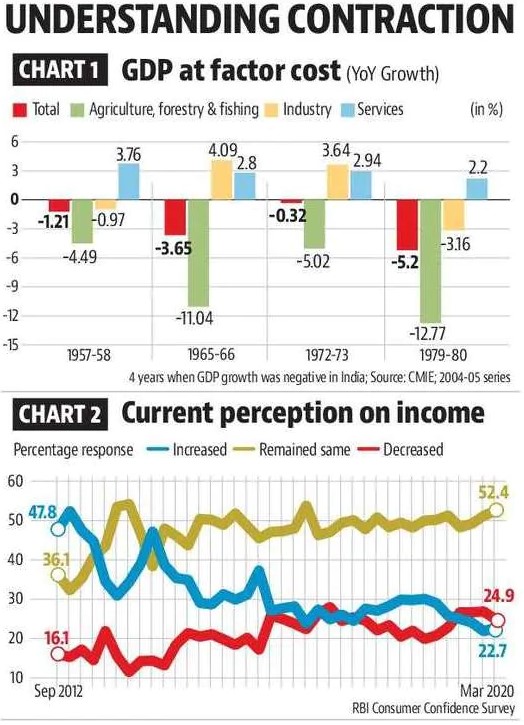
- Almost 90% of household assets in India are held in the form of either land or buildings.
- The Indian economy is characterized by massive inequality.
- It has more than 400 million workers. Just over 50 million filed income tax returns (ITRs) in Assessment Year (AY) 2018-19.
- Among the 50 million who filed ITRs, income reported by the top 5% had a share of 15% in India’s GDP.
- This also means that India’s direct tax collections will depend significantly on what happens to the incomes of the richest.
- An analysis of income tax data shows that the top 5% tax payers paid almost 90% of income tax in AY 2018-19.
- While the poorest are the neediest during a contraction, a big fall in the incomes of the richest will curtail the ability of the government to help the poor.
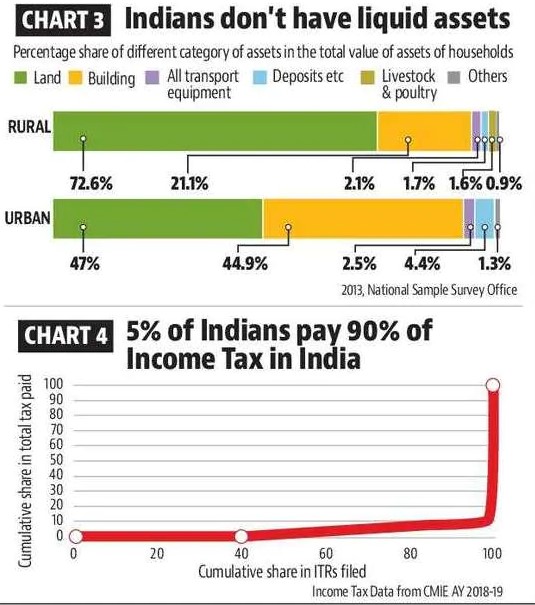
-Source: Hindustan Times
CENTRE SET TO REDEFINE ‘MIGRANT WORKERS’
Focus: GS-II Social Justice
Why in news?
- Learning from the ongoing migrant crisis, the government is set to redefine “migrant workers” after 41 years and plans to register them to enable access to social security and health benefits under the Employees’ State Insurance Corporation.
- The new steps, which follow migration of lakhs of workers, both in the informal and formal economy during the lockdown, are proposed under an updated Code on Social Security.
- The steps are seen to be crucial as the current legal framework is inadequate, with absence of any kind of record of employment prompts a serious rethink in the government.
Migrant workers will get portability of benefits?
- The Inter-State Migrant Workmen Act, 1979 applies to establishments with five or more inter-state migrant workers and to contractors involved in their hiring.
- The proposed legal framework will apply to individual migrant workers who earn up to a specified amount with even domestic helps included in its framework.
- These workers will enjoy benefit of portability of benefits and be entitled to be given the fare to go home once every year.
- Through this exercise, an Aadhaar-linked national database is proposed to be created, which can be accessed by the Centre and states.
- A key element of the plan is to allot unorganised sector workers an Unorganised Worker Identification Number (U-WIN).
Inter-State Migrant Workmen Act, 1979
- The Inter-State Migrant Workmen (Regulation of Employment and Conditions of Service) Act, 1979 is an Act of the Parliament of India enacted to regulate the condition of service of inter-state labourers in Indian labour law.
- The Act’s purpose is to protect workers whose services are requisitioned outside their native states in India.
- Whenever an employer faces shortage of skills among the locally available workers, the act creates provision to employ better skilled workers available outside the state.
- The Act seeks to regulate the employment of inter-State migrants and their conditions of service.
- It envisages a system of registration of such establishments.
- The principal employer is prohibited from employing inter-State workmen without a certificate of registration from the relevant authority.
- The law also lays down that every contractor who recruits workmen from one State for deployment in another State should obtain a licence to do so.
- Contractors are bound by certain conditions. These include committing them to providing terms and conditions of the agreement or any other arrangement on the basis of which they recruit workers.
Occupational Safety, Health and Working Conditions Code, 2019
- The Occupational Safety, Health and Working Conditions Code, 2019 which is a proposed code – seeks to merge 13 labour laws into a single piece of legislation. (The Inter-State Migrant Workmen Act, 1979, is one of them.)
- Even though the Code seeks to preserve many of the protections and rights given to inter-State workers, trade unions feel that it is always better to have a separate enactment.
- Activists fear that specific safeguards given to migrant workers may be lost as a result of the consolidation in the new code.
- The unprecedented distress and misery faced by migrant workers due to the current lockdown has drawn attention to a beneficial legislation dedicated to their welfare.
-Source: Times of India
UNRECORDED MIGRANTS OF INDIA
Focus: GS-II Social Justice, GS-III Indian Economy, Don’t delve too much into the exact numbers
Why in news?
Official estimates undercount short-term migrants who are the most vulnerable, and differ significantly from more stable long-term migrants.
The main source of officially used data on migration in India comes from the 2011 census, which found that 455 million Indians, or more than one-third of the population, could be classified as migrants.
Migrant Numbers
The census defines a migrant as a person who is at a different place from his or her usual place of residence at the time of the census enumeration.
However, the vast majority of these migrants are women who have moved out of their village or town to get married.
Economic migrants make up less than a tenth of all migrants at just more than 45 million.
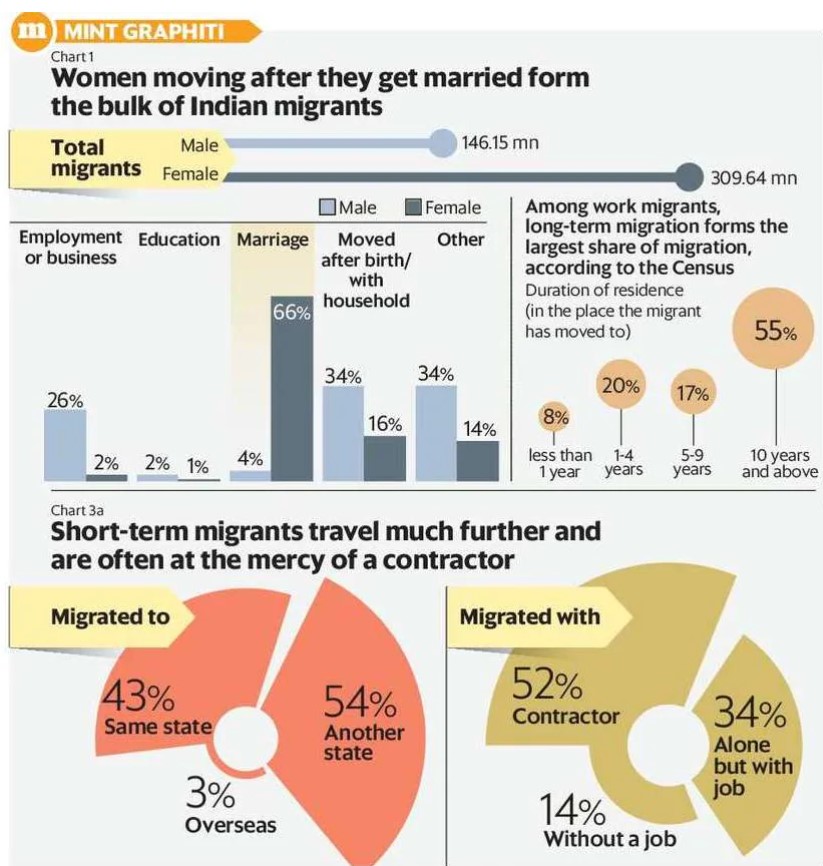
The 2016-17 Economic Survey estimated that the total migrant workforce could have been over 100 million in 2016.
Who was left out?
- Left out of census estimates is the circular or seasonal migrant, who might go to a city to work for a period of time and then go home or to a new place.
- The census asks people in a village or town if their usual place of residence, somewhere they have lived for over six months, is different from where they are now.
- Hence, it misses all those people who undertook a migration but then returned.
Short-term and Long-term Migrants
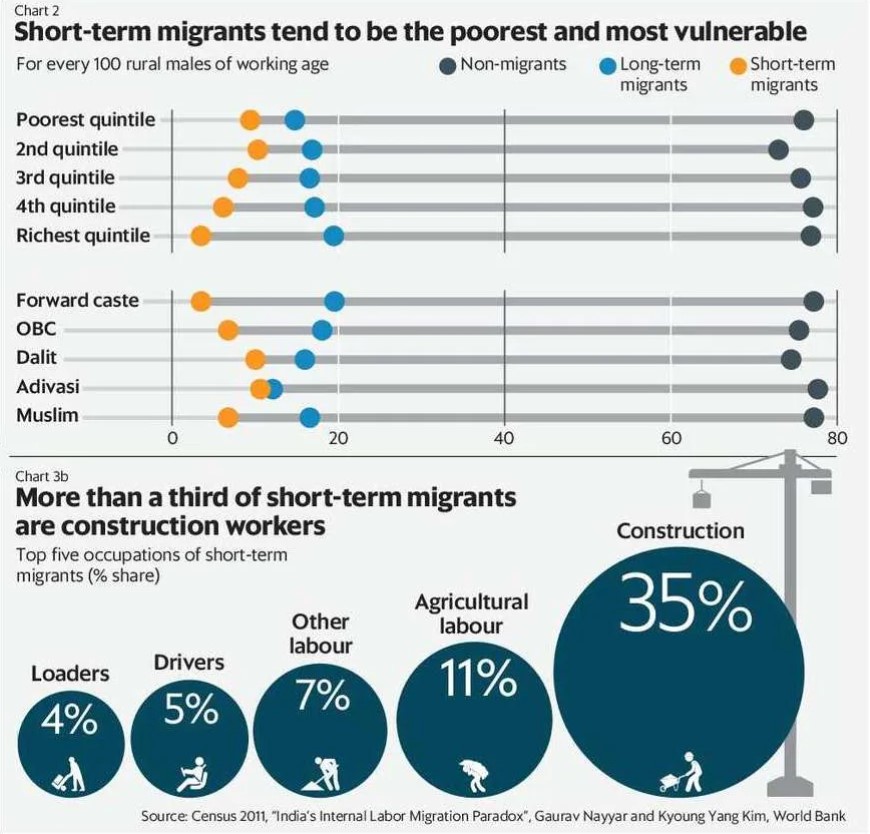
- Research has found that long-term migrants come from both wealthy and poor states but short-term migrants are mostly located in poorer states such as Uttar Pradesh, Bihar, and Chhattisgarh.
- Long-term migrants are more likely to be educated, come from upper income groups, and belong to forward castes.
- In contrast, short-term migrants are less educated, tend to be dalits or adivasis, and come from the poorer sections of society. Of the households that reported at least one short-term migrant, 45% were either dalits or adivasis.
- Of the households that reported at least one short-term migrant, 45% were either dalits or adivasis..
- One-third of short-term migrants were construction workers, and contractors played a key role in arranging for work.
-Source: Livemint
GOOGLE FACES ANTITRUST CASE IN INDIA
Focus: GS-III Indian Economy, GS-II Governance, Prelims
Why in news?
The Competition Commission of India (CCI) is looking into allegations that Alphabet Inc’s Google is abusing its market position to unfairly promote its mobile payments app in the country.
Details
The complaint alleges the U.S. tech giant more prominently showcases its Google Pay app inside its Android app store in India, giving it an unfair advantage over apps of competitors, which hurts consumers.
Google Pay allows users in India to do inter-bank fund transfers and bill payments. It competes with apps such as Softbank-backed Paytm and Walmart’s PhonePe in India’s crowded digital payments market.
Antitrust and Competition Laws in India
- The Indian Parliament approved a comprehensive competition legislation — the Competition Act 2002 (Competition Act), to regulate business practices in India so as to prevent practices having an appreciable adverse effect on competition (AAEC) in India.
- The Competition Act, 2002 replaced the archaic The Monopolies and Restrictive Trade Practices Act, 1969.
The Competition Act primarily seeks to regulate three types of conduct:
- Anti-competitive agreements
- Abuse of a dominant position
- Combinations – i.e., mergers, acquisitions and amalgamations.
- The Competition Act, 2002 extends to whole of India.
- It is a tool to implement and enforce competition policy and to prevent and punish anti-competitive business practices by firms and unnecessary Government interference in the market.
- Competition laws is equally applicable on written as well as oral agreement, arrangements between the enterprises or persons.
- The Competition Act, 2002 was amended by the Competition (Amendment) Act, 2007 and again by the Competition (Amendment) Act, 2009.
Competition Commission of India
- Competition Commission of India is a statutory body of the Government of India responsible for enforcing The Competition Act, 2002 throughout India.
- CCI is responsible to prevent activities that have an appreciable adverse effect on competition in India.
- It is the duty of the Commission to eliminate practices having adverse effect on competition, promote and sustain competition, protect the interests of consumers and ensure freedom of trade in the markets of India.
- The Commission is also required to give an opinion on competition issues on a reference received from a statutory authority established under any law and to undertake competition advocacy, create public awareness and impart training on competition issues.
- CCI consists of a Chairperson and 6 Members appointed by the Central Government.
-Source: The Hindu
TRUMP OFFERS TO MEDIATE, CHINA’S AMBASSADOR ON COOPERATION
Focus: GS-II International Relations
Why in news?
- The U.S. President Donald Trump said on 27th May that he had offered to help New Delhi and Beijing resolve their ongoing tensions at the Line of Actual Control (LAC).
- The offer came as a surprise on a day when the Chinese Ministry of Foreign Affairs (MoFA) appeared to soften its line on the stand-off, suggesting the situation was “stable and controllable” now.
Details of U.S. position
- Mr. Trump’s offer comes at a time when the U.S. and China themselves have tensions between them on several fronts.
- In addition to an uneasy trade situation between the two, the U.S. has accused China of not being transparent with information in relation to the COVID-19 pandemic.
- And just recently, U.S. National Security Advisor Robert O’Brien said the U.S. could impose sanctions on both China and Hong Kong, if China were to go ahead and impose a national security law on Hong Kong.
- Neither the Ministry of External Affairs (MEA) nor China’s MoFA responded to Mr. Trump’s statement.
- India has in the past rejected all offers for third party mediation, and China is also expected to reject the proposal.
What the Chinese Ambassador to India had to say?
- India and China have kept up “close communication and cooperation” since the COVID-19 outbreak, said China’s Ambassador to India.
- Making no direct reference to the ongoing stand-off between the two neighbours armies at the Line of Actual Control in Ladakh and Sikkim, China’s Ambassador to India said that India and China should “never let the differences shadow the overall situation of bilateral cooperation”, referring to the two countries as the “Dragon and Elephant dancing together”.
Related Articles
U.S. Slams China on border disputes and threat posed
Changed dynamic along India-China Border
India-China conflict in Ladakh
-Source: The Hindu



